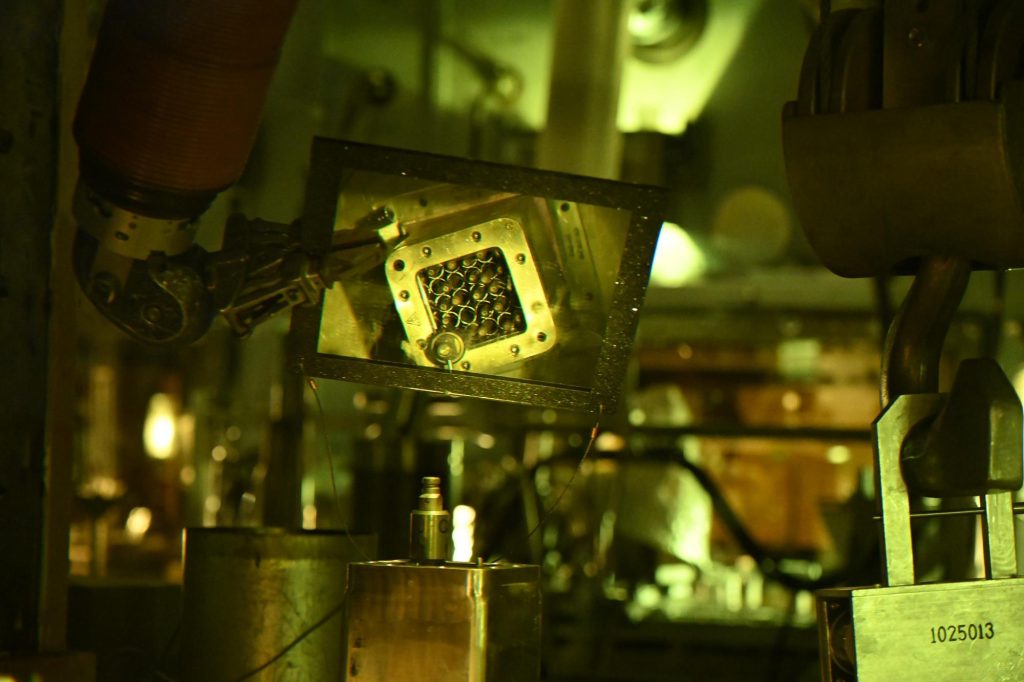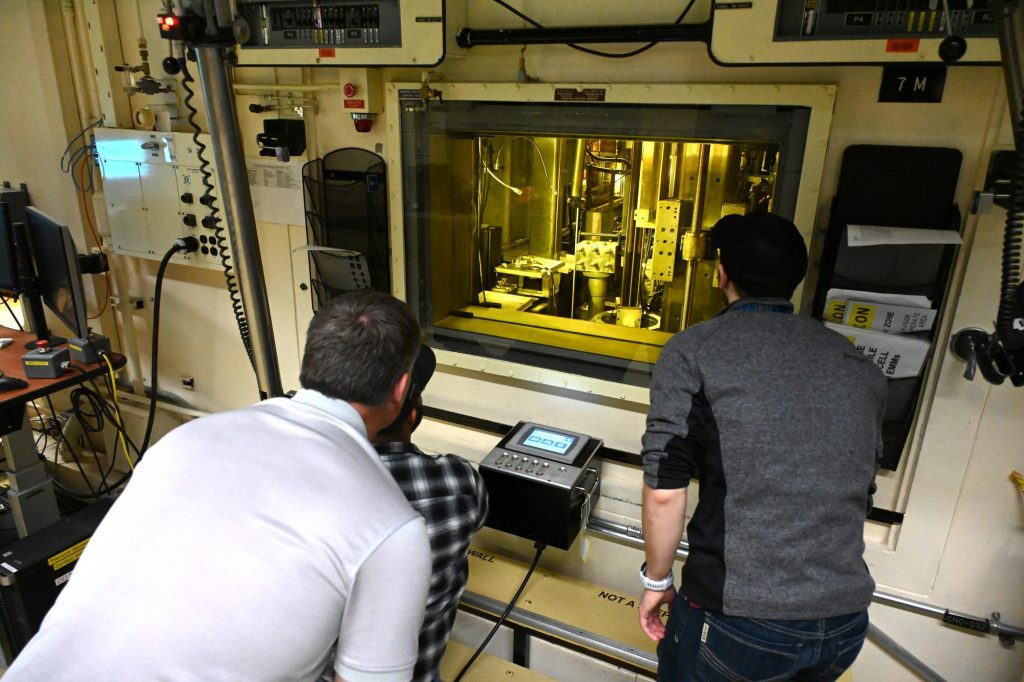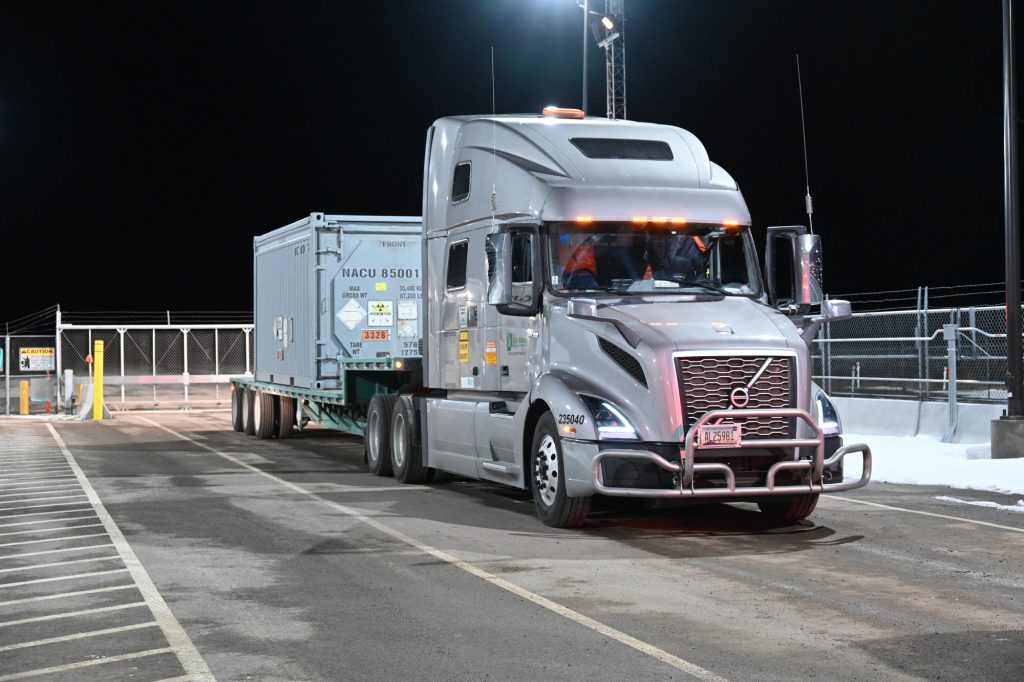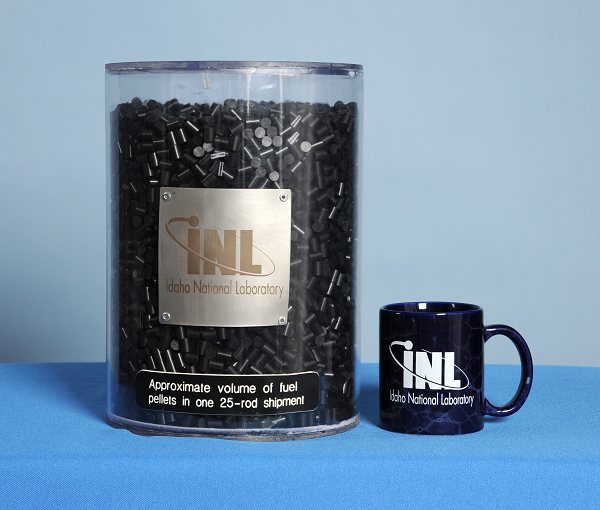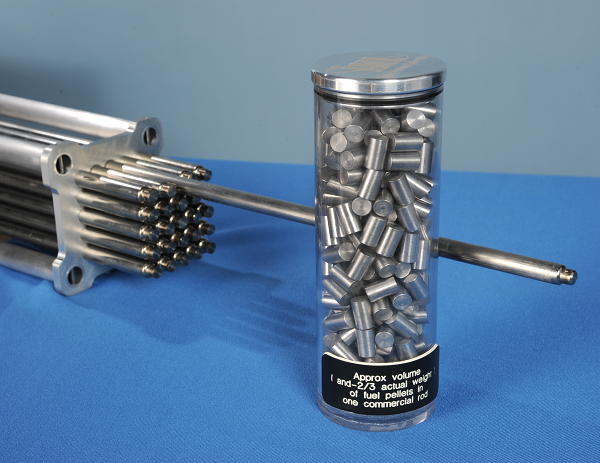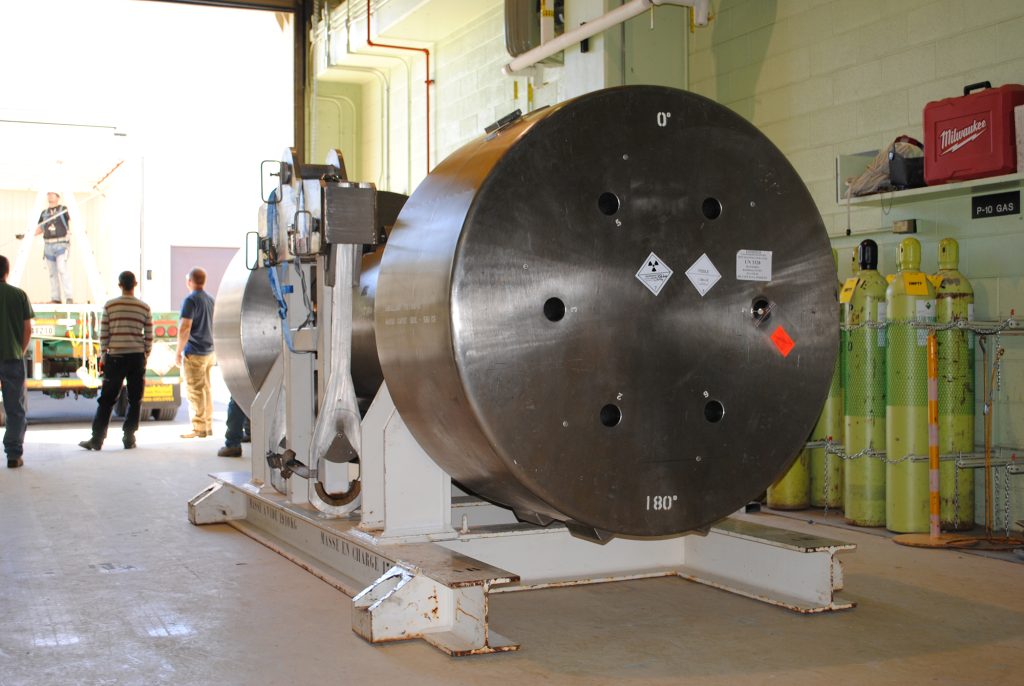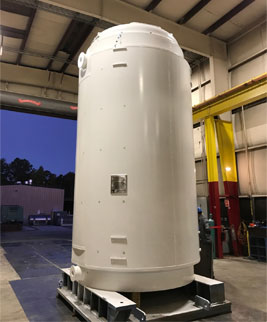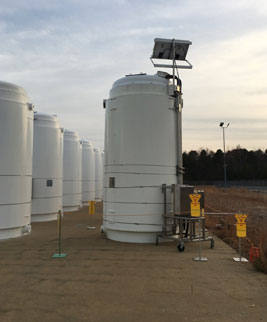Research Quantities of Commercial Nuclear Fuel
The U.S. Department of Energy and industry rely on Idaho National Laboratory to conduct America’s nuclear energy research, development and demonstration. More than 50 advanced nuclear companies across North America are examining advanced reactor concepts, often in partnership with INL and other national laboratories.
The state of Idaho and DOE reached an agreement to allow INL to receive small quantities of spent commercial nuclear fuel for research, allowing the nation’s nuclear laboratory to continue its important mission.
Background
In 1995, the state of Idaho, the U.S. Navy, and the U.S. Department of Energy reached an agreement that settled a lawsuit filed by the state to limit the shipment of spent nuclear fuel to DOE’s Idaho Site for storage.
Known as the 1995 Settlement Agreement, the document governs spent fuel shipments bound for what was then the Idaho National Engineering Laboratory or for the Naval Reactors Facility. The agreement included terms that:
- Limited the amount of spent nuclear fuel entering the Site to 55 metric tons and required DOE to report annually on the amount received;
- Specifically excluded shipments of spent fuel from commercial nuclear power plants;
- Imposed a deadline of Dec. 31, 2012 to complete treatment of sodium-bearing waste at the Site; and
- Allowed the state to suspend shipments if DOE fails to meet ANY deadlines or obligations.
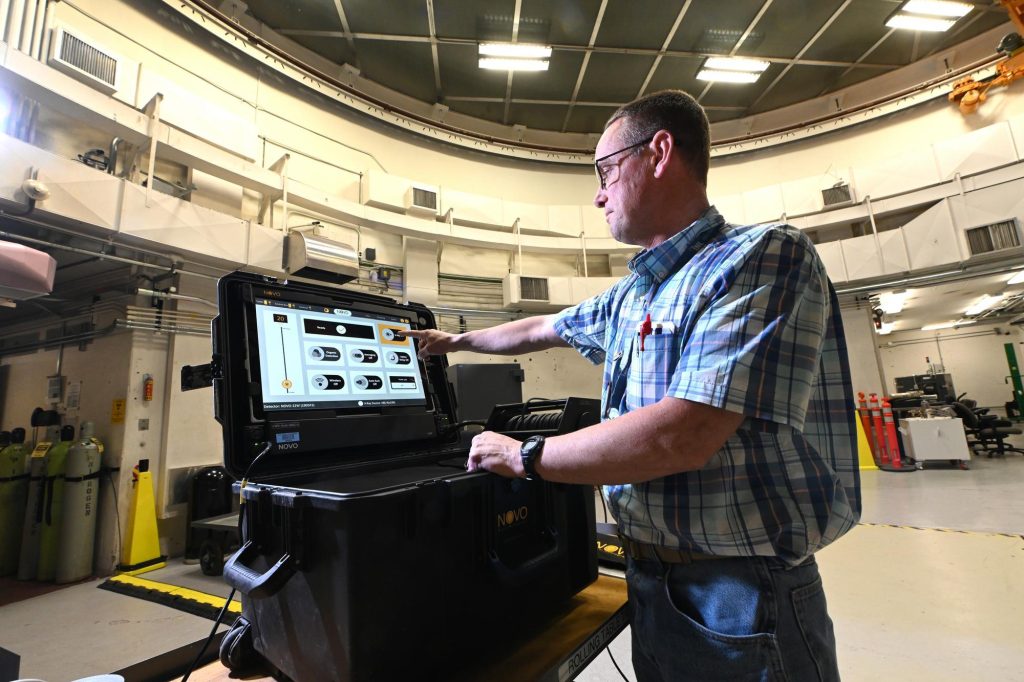
INL's Research Mission
As the nation’s largest source of 24/7 electricity, nuclear energy is an important part of the nation’s energy security. Today’s commercial nuclear fuels are more efficient than those of the past, which has reduced costs for utilities and their customers.
INL is an internationally recognized nuclear energy laboratory ideally suited for nuclear energy research. The nation has made considerable investments to build unmatched research capabilities at INL.
At INL, one-of-a-kind research and development capabilities include the Advanced Test Reactor, the Transient Reactor Test (TREAT) Facility and the Hot Fuel Examination Facility, home to the largest “hot cell” in the United States designed to test and examine irradiated materials.
Waiver History
2011
The state granted a conditional waiver to the exclusion of commercial spent fuel for small quantities needed for examinations and research.
2014
DOE attempted to exercise that waiver by asking the state to allow research quantities of commercial spent fuel to come to Idaho National Laboratory for research.
The state denied that request because DOE had missed the 2012 deadline for completing treatment of sodium-bearing waste at DOE’s Idaho Site.
2019
DOE and the state of Idaho signed a Supplemental Agreement to the 1995 Idaho Settlement Agreement.
With the agreement, INL can receive a shipment of 25 rods of used nuclear fuel designed for extended use and robust safety features, potentially delivering cost savings for consumers and increasing a nuclear power plant’s resilience under potential accident conditions.
Before INL could receive this shipment, DOE must treat at least one full canister of sodium bearing waste.
- DOE agrees to ship at least 300 pounds of special nuclear material (plutonium and uranium) out of Idaho by Dec. 31, 2021.
- DOE agrees to begin treating sodium bonded Experimental Breeder Reactor II driver fuel pins, now stored at INL, into material for high assay low enriched uranium (HALEU) fuel for reactors. This work began within 30 days of the signing of this agreement. DOE will treat at least 165 pounds of the pins on a three-year rolling average, and will complete all treatment of the pins by Dec. 31, 2028. DOE will dispose outside the state any waste materials generated by the treatment (with the exception of high level waste) by Jan. 1, 2035.
- DOE will allocate to Idaho at least 55% of all transuranic waste shipments received at the Waste Isolation Pilot Plant. In addition, DOE will give Idaho priority for additional waste shipments that become available.
- DOE may begin planning for, and carrying out, future shipments of research quantities of spent fuel to INL (as agreed to in the 2011 Memorandum of Agreement between DOE and the state of Idaho) as long as DOE completes treating at least 100 canisters of sodium-bearing waste, in addition to sustained operations of the facility to treat sodium bearing waste at DOE’s Idaho Site, the ongoing treatment of EBR-II driver fuel pins, and the removal of special nuclear material from the state.
2023
After meeting the requirements outlined in the 2019 Supplemental Agreement, INL received 25 used nuclear fuel rods to conduct further research.
2025
DOE and the state of Idaho signed a waiver to the 1995 Settlement Agreement allowing INL to bring in a high burnup nuclear fuel cask and limited amounts of spent fuel from American university research reactors.
Research on the high burnup nuclear fuel cask will advance understanding of how nuclear fuel can be safely used and stored. This information will support licensing efforts for both current and future nuclear generating stations and fuel storage.
Research reactors at American universities educate the next generation of nuclear scientists and engineers while enabling important nuclear research. This waiver makes it possible for INL to safely manage small amounts of spent nuclear fuel from domestic university reactors and preserve this vital national research and talent pipeline. Without this waiver, some universities risk having to shut down their research reactors as many have reached their regulatory limits for spent fuel storage.
Frequently Asked Questions
What is spent nuclear fuel?
Nuclear fuel undergoes nuclear fission to sustain the chain reaction inside a nuclear reactor. The fuel is generally in the form of ceramic pellets encased in protective metal tubes to form fuel rods.
An arrangement of fuel rods forms a fuel assembly, which is loaded into the reactor core. Inside the core, the nuclear fuel undergoes fission, producing heat to power turbines and generate electricity. A single fuel assembly spends about five years in a reactor on average before it can no longer sustain the nuclear chain reaction and is considered “used” or “spent” fuel.
Is spent nuclear fuel dangerous to people or the environment?
Spent nuclear fuel can be managed in a way that protects both people and the environment. After undergoing fission inside a reactor core, nuclear fuel contains radioactive byproducts from the fission reactions.
Although these byproducts remain contained inside the fuel assemblies, spent nuclear fuel is radioactive and generates heat. When the fuel assemblies are first removed from the reactor core, they are placed in a spent fuel pool to cool over time. After the spent fuel assemblies have cooled to the point that they no longer need to be stored underwater, they are safely stored at the plant in large containers made of steel-reinforced concrete.
Does the settlement agreement ban spent nuclear fuel shipments to Idaho?
No, the 1995 Settlement Agreement allows the Department of Energy to send 55 metric tons (about 121,000 pounds) of its spent fuel to Idaho between 1995 and 2035. In 2011, Idaho and DOE agreed that research quantities of commercial fuel coming to INL for study would be counted against that total. In 2019, the two parties agreed to enhanced conditions under which small quantities material could be shipped to Idaho strictly for research purposes.
Does the settlement agreement prevent commercial spent fuel coming to Idaho for storage?
Commercial fuel cannot be sent to INL for the purpose of storage. Experimental fuel from a commercial power plant — 25 rods containing about 100 pounds of heavy metal — was shipped to INL in 2023 for critical research that INL is well-equipped to conduct.
In 2025, DOE and the State of Idaho signed a waiver to the Idaho Settlement Agreement allowing a high burnup fuel cask with experimental fuel to be shipped to Idaho. INL’s research on this cask will be used by commercial nuclear power plants to meet U.S. Nuclear Regulatory Commission requirements.
Is Idaho at risk of becoming the nation's de facto spent fuel repository?
No. The 100-pound research samples that arrived in 2023 are not “waste” that the Department of Energy or the industry is trying to get rid of. This material will help answer important scientific questions, and the volume is tiny compared to the existing inventory stored in Idaho (~600,000 pounds) and stored nationwide at commercial sites (~150 million pounds).
The limited amounts of spent fuel from American university research reactors is not commercial fuel. INL is positioned to continue to receive the small amounts of spent nuclear fuel, which is owned by DOE, to store at the Idaho Nuclear Technical and Engineering Center CPP‑603 dry storage facility and prepare for shipment until DOE establishes a final disposal repository.
What is the purpose of the high burnup fuel research?
These experimental fuels are designed for extended use and with robust safety features. They have the potential to deliver significant cost savings for consumers while increasing a nuclear power plant’s resilience under potential accident conditions.
The data generated from experiments and analyses at INL are essential to establishing the safety basis required by the U.S. Nuclear Regulatory Commission to allow the fuel’s use at more nuclear power plants throughout the U.S.
Why can't the research be done on fuel that is already here?
Today’s commercial nuclear fuels are more efficient than those of the past, which has reduced costs for utilities and their customers. To maintain safe storage at utility locations around the U.S., the industry and the U.S. Nuclear Regulatory Commission must understand the physical and chemical characteristics of this high-efficiency fuel. The fuel currently stored at INL does not have the same features as today’s high-efficiency commercial fuel.
Can this research be done elsewhere?
Yes, other national labs are eager to attract this important work. However, the nation has made considerable investments to build the unmatched research capabilities at INL, an internationally recognized nuclear energy research, development and demonstration laboratory. This research could be done elsewhere, but not as thoroughly because only INL has the full suite of capabilities.
Will this work threaten the aquifer?
No. Contaminants being monitored to protect the aquifer were not created by spent nuclear fuel stored at the Site. These contaminants originated from disposal of legacy materials decades ago. Disposal practices today are vastly improved, providing multiple barriers between this material and the aquifer, such that there is no credible pathway for these materials to reach the aquifer.

